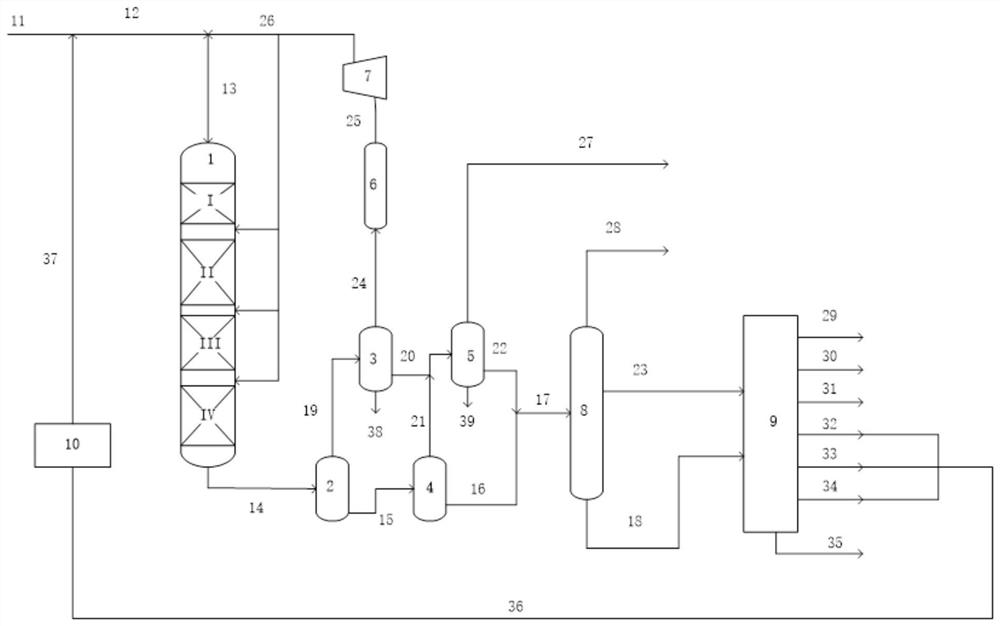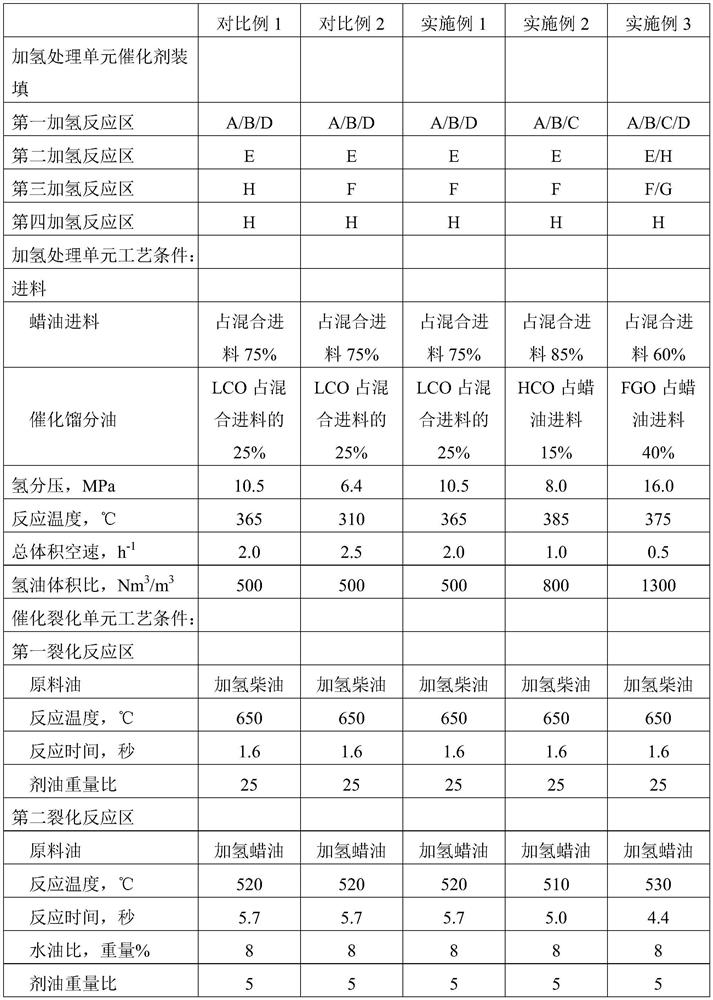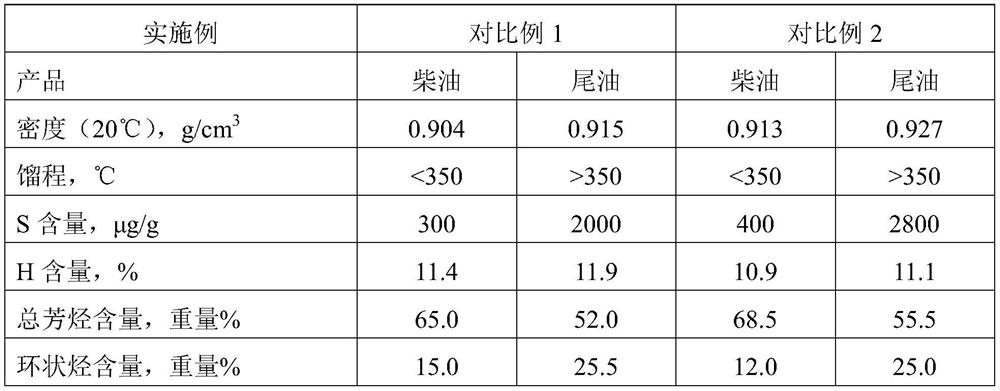A combined hydrotreating-catalytic cracking process that produces more isobutane and light aromatics
A catalytic cracking and combined process technology, which is applied in the direction of hydrotreating process, hydrocarbon oil treatment products, hydrocarbon oil treatment, etc., can solve the problem of reducing the processing capacity and economic benefits of catalytic cracking units, increasing the load of regenerators, and unsatisfactory cracking effects, etc. problems, to achieve the effects of excellent product quality, increased gasoline yield, and reduced coke yield
- Summary
- Abstract
- Description
- Claims
- Application Information
AI Technical Summary
Problems solved by technology
Method used
Image
Examples
preparation example Construction
[0089] (1) Preparation of silica carrier:
[0090] After 3000 grams of Silica Gel 955 commercial silica gel (the product of Davison Chemical Company in the U.S., containing SiO 99.8% by weight) and 75 grams of scallop powder were mixed uniformly, then mixed with 84 milliliters of nitric acid (concentration 65-68%, analytically pure, Shantou Xilong Chemical Industry Co., Ltd. plant) and 4200 ml of water, and the mixture was kneaded evenly on a twin-screw extruder, and then extruded into a butterfly-shaped strip of ф1.3 mm. After the wet strip was dried at 120°C for 4 hours, it was roasted at 600°C for 3 hours. A silica carrier S is obtained. Adopt BETN 2 Adsorption method analysis, the specific surface area of the carrier is 180m 2 / g, the pore volume is 0.78mL / g.
[0091] (2) Preparation of aromatics deep hydrogenation saturation catalyst:
[0092] Take 200 grams of silicon oxide carrier S, impregnate with 200 milliliters of dilute ammonia solution (10% concentration) co...
Embodiment 1
[0096] use figure 1 In the process flow shown, wax oil raw material I and catalytic cracking light cycle oil (LCO) are mixed and then enter the hydrotreating reactor, and are sequentially mixed with hydrogenation protecting agent A, hydrogenation protecting agent B and hydrotreating agent in the first hydrogenation reaction zone. Hydrodemetallization catalyst D (loading volume ratio: 10:10:80) contact reaction, contact reaction with hydrodesulfurization catalyst E in the second hydrogenation reaction zone, and contact reaction with aromatics deep hydrogenation saturation catalyst F in the third hydrogenation reaction zone Contact reaction, contact reaction with hydrodesulfurization and denitrogenation catalyst H in the fourth hydrogenation reaction zone. The liquid product enters the fractionation system for further separation to obtain hydrogenated naphtha, hydrogenated diesel oil, and hydrogenated tail oil.
[0097] The obtained hydrogenated diesel enters the first cracking...
Embodiment 2
[0101] use figure 1In the process flow shown, the wax oil raw material I and the catalytic cracking heavy cycle oil (HCO) are mixed and then enter the hydroprocessing reactor, and are sequentially mixed with the hydrogenation protection agent A, the hydrogenation protection agent B and the hydrogenation reaction zone in the first hydrogenation reaction zone. Hydrodemetallization catalyst C is contacted (loading volume ratio is 15:10:75) for reaction, and reacts with hydrodesulfurization catalyst E in the second hydrogenation reaction zone, and reacts with aromatics deep hydrogenation saturation catalyst F in the third hydrogenation reaction zone Contact reaction, contact and react with hydrodesulfurization and denitrogenation catalyst H in the fourth hydrogenation reaction zone. The liquid product enters the fractionation system for further separation to obtain hydrogenated naphtha, hydrogenated diesel oil, and hydrogenated tail oil.
[0102] The obtained hydrogenated diesel ...
PUM
| Property | Measurement | Unit |
|---|---|---|
| specific surface area | aaaaa | aaaaa |
| specific surface area | aaaaa | aaaaa |
Abstract
Description
Claims
Application Information
 Login to View More
Login to View More - R&D
- Intellectual Property
- Life Sciences
- Materials
- Tech Scout
- Unparalleled Data Quality
- Higher Quality Content
- 60% Fewer Hallucinations
Browse by: Latest US Patents, China's latest patents, Technical Efficacy Thesaurus, Application Domain, Technology Topic, Popular Technical Reports.
© 2025 PatSnap. All rights reserved.Legal|Privacy policy|Modern Slavery Act Transparency Statement|Sitemap|About US| Contact US: help@patsnap.com



